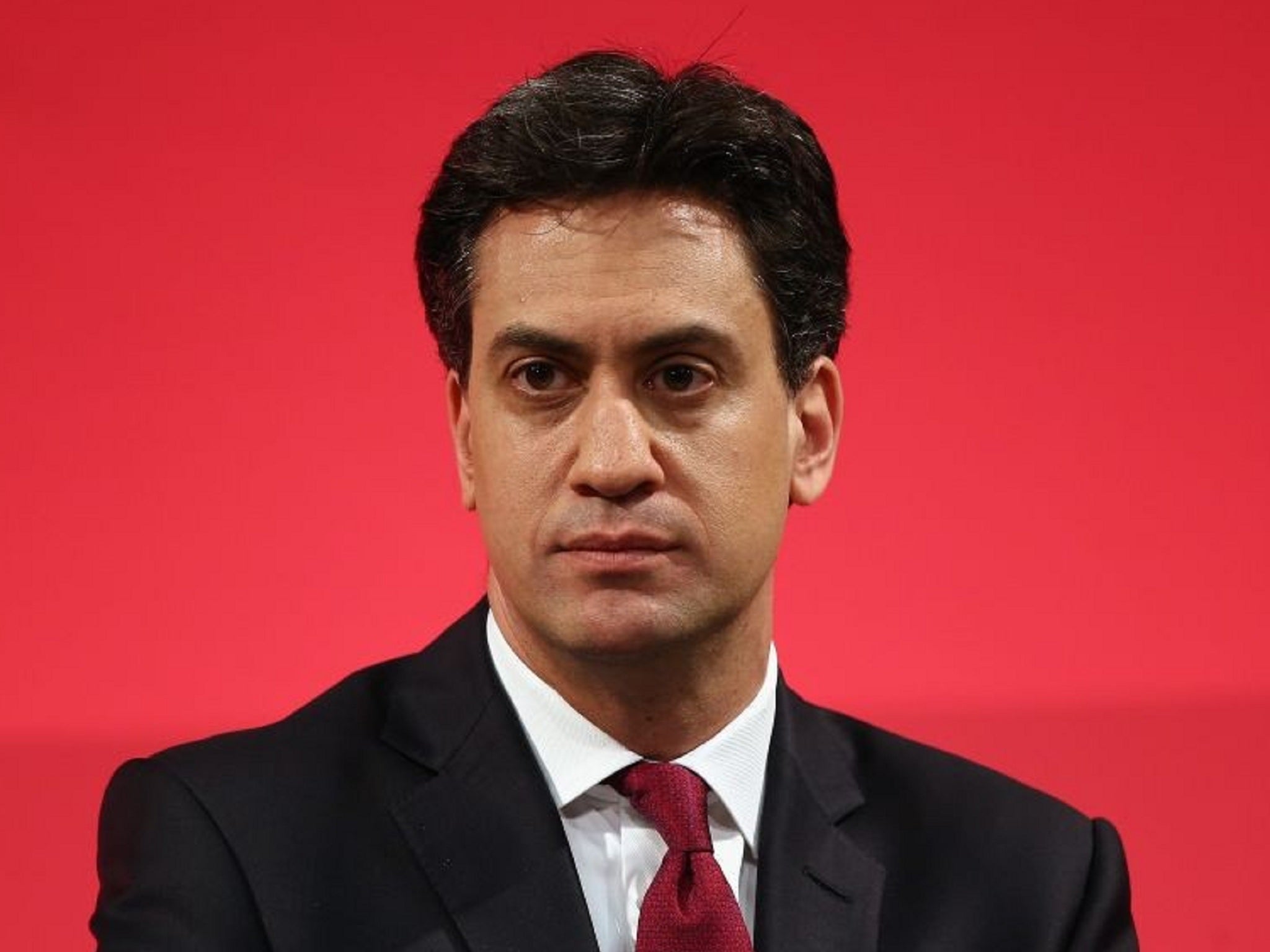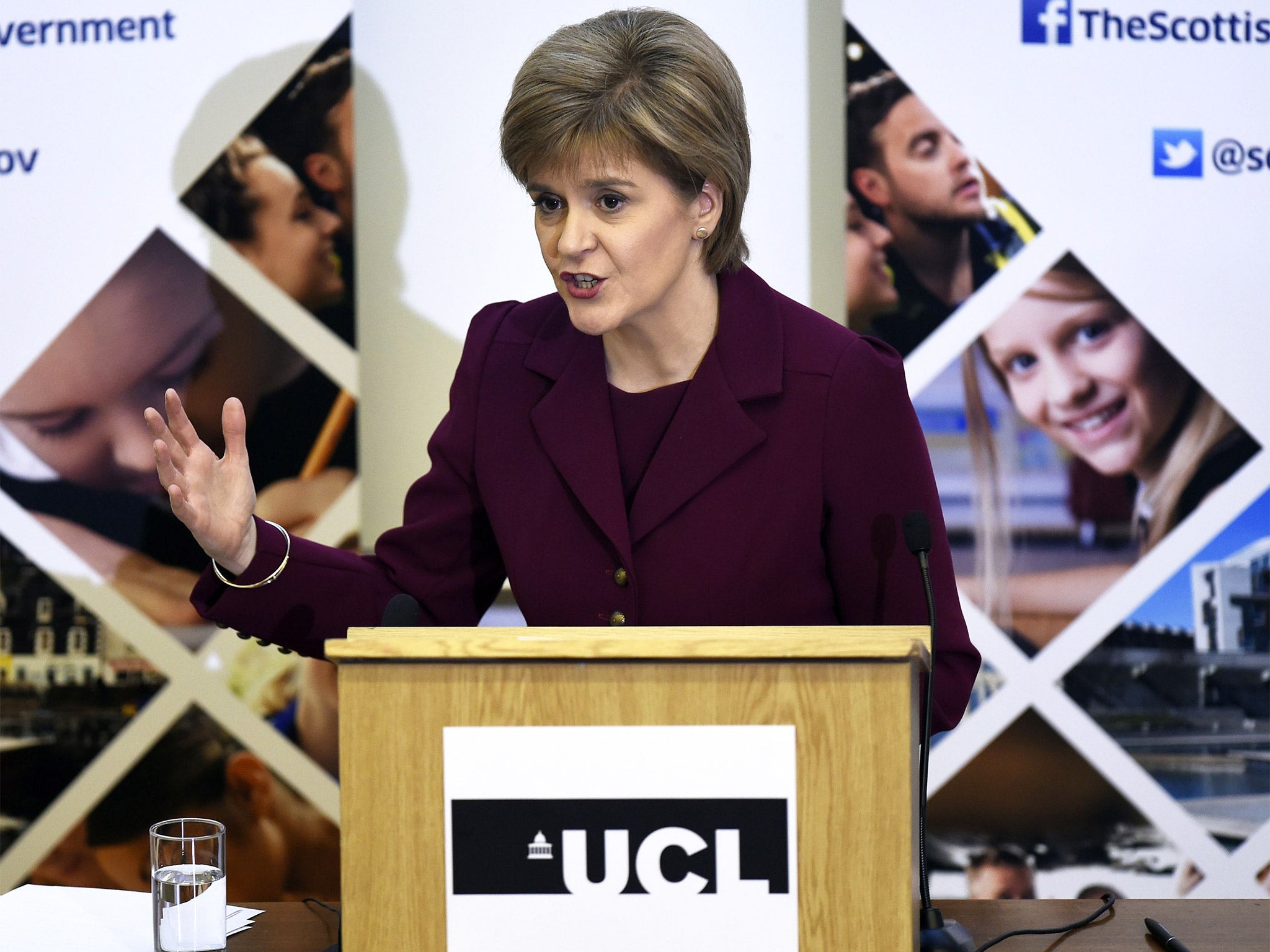Wealthy Scottish voters could offer Ed Miliband a route to No 10
Wealthy Scottish heartlands could rescue Labour’s election hopes

Your support helps us to tell the story
From reproductive rights to climate change to Big Tech, The Independent is on the ground when the story is developing. Whether it's investigating the financials of Elon Musk's pro-Trump PAC or producing our latest documentary, 'The A Word', which shines a light on the American women fighting for reproductive rights, we know how important it is to parse out the facts from the messaging.
At such a critical moment in US history, we need reporters on the ground. Your donation allows us to keep sending journalists to speak to both sides of the story.
The Independent is trusted by Americans across the entire political spectrum. And unlike many other quality news outlets, we choose not to lock Americans out of our reporting and analysis with paywalls. We believe quality journalism should be available to everyone, paid for by those who can afford it.
Your support makes all the difference.Middle-class voters in some of Scotland’s most prosperous constituencies could rescue Ed Miliband and improve his chances of making it to Downing Street, according to unpublished doorstep canvassing revealed to The Independent.
In a trend not picked up by recent polling – which continues to forecast an across-the-board meltdown for the Scottish Labour Party – voters in relatively wealthy constituencies prove to be resistant to the SNP’s post-referendum surge.
If the trend continues until election day in May, it would mean a massive political shift in identity for Labour north of the border. They would effectively become the party of affluent Scotland – holding what once were traditional Conservative seats – while their working-class heartlands fall to the SNP.
One Labour MP, who expects to lose his seat in May, predicted “normal politics in Scotland will be turned on its head in two months.” He described the imminent “shift” in Labour’s identity as “bizarre” – especially as in the rest of the UK, Labour still scoops up most of the working-class vote.
With national polls suggesting Labour are neck-and-neck with the Tories, the rump of wealthy seats retained by Labour in Scotland could help edge Mr Miliband into No 10 – possibly with the support of other left-of-centre parties. In addition to taking former Labour working-class “heartlands”, the SNP’s are forecast to pick up seats in the predicted collapse of the Liberal Democrat vote, adding to their present six Westminster constituencies.
But if they cannot win seats across affluent Scotland, in constituencies where there was a large Tory and Lib Dem vote immediately behind Labour in the 2010 election, this could critically leave the nationalists short of the huge balance-of-power numbers currently being predicted.
The recent Lord Ashcroft specialist poll – almost entirely concentrated on Labour seats where the SNP was already in a significantly strong second place – predicted a catastrophe for Labour where 35 of Mr Miliband’s 41 Scottish seats would fall to the SNP in unprecedented swings.
The constituencies selected by Lord Ashcroft were largely in the west of Scotland and Glasgow, plus one Dundee seat. Glasgow and Dundee were the only two regions of Scotland which voted Yes in last September’s independence referendum. Nearly all of the Ashcroft seats also fell into the low-income, high-benefit claimant rate category.
However The Independent’s analysis shows that the positive forecast for the SNP is radically different away from Labour heartlands. In constituencies in Stirling, some in Edinburgh and others at the top of Scotland’s income scale, Labour may well do well.
Many of these seats have past associations with leading Conservative ministers in Thatcher administrations: such as the former Scottish Secretary, Michael Forsyth, and Michael Ancram, the former Scotland and Northern Ireland minister. Other non-heartland seats Labour are likely to hold, at one time held associations with leading Tory figures such as Malcolm Rifkind, James Douglas-Hamilton, and Allan Stewart.

In 1983, the Conservatives still held 21 Scottish seats, about half Labour’s total. By 1997, Tony Blair’s first win, the Tories were wiped out. Many of these former Tory strongholds, still dominated by affluent neighbourhoods, such as Morningside in Edinburgh, Balfron in Stirlingshire, or Newton Mearns in East Renfrewshire, are now on course to become the areas to redefine Scottish Labour.
Canvassing returns by Labour activists in these constituencies, revealed to The Independent, show that in line with national polls, Labour is suffering – falls of between 5 and 20 per cent have been recorded – in wards associated with their “traditional” working-class vote.
However, in wealthier, middle-class neighbourhoods, where houses prices are often high above the Scottish average, Labour’s vote is marginally up: jumps of up to 15 per cent from 2010 figures are being recorded.
Another Scottish MP in one of the “rescue” seats, who specifically asked not to be named, admitted to feeling uneasy about the identity Scottish Labour could now have. The MP said: “The 45 per cent who vote YES [in the referendum] are being held together as one nationalist voting group. That is making the difference between this and previous elections. If there is a direct switch from Labour to the SNP – as in most of the Ashcroft seats – it’s easy to predict a meltdown. In areas where there is, or was, a significant Tory and LibDem vote, the picture is far more complex.”
An Edinburgh Labour MP, who asked not to be quoted by name, said most of the difficulty in May would be located in the West of Scotland. The MP said that in local canvassing “we’re down in the old Labour territory, around 6 per cent. But in more affluent part’s we are up, 15-plus.”
In discussions with leading advisers and local activists in the most affluent seats, The Independent has identified a debate over how the Liberal Democrat vote will split between Labour and the SNP.

Although most polls are predicting Nick Clegg’s party will lose all but one of its Scottish MPs, activist in parts of Aberdeenshire, Edinburgh, Stirling, and Fife have questioned the assumption that most of the Lib Dem vote will go to the SNP.
In Edinburgh, one Labour canvasser said, from their returns, there appeared to be no uniform shift. That directly contradicts those at the top of Scottish Labour who believe relatively rich seats like Edinburgh West, currently held by the Lib Dems, which includes the elite enclave of Cramond, might already be unwinnable.
The same pessimism at the top of the party, which has effectively ruled out taking Argyll and Bute from the Lib Dems, and Menzies Campbell’s North East Fife seat, is not shared by their local parties.
Additional research by Keumars Afifi-Sabet
Seat analysis: East Renfrewshire
Until Labour’s 1997 landslide under Tony Blair, East Renfrewshire (previously Eastwood) had been a Tory stronghold.
The constituency is regarded as an affluent, middle-class Glasgow commuter area. It has neighbourhoods of high-value homes, like Newton Mearns, and is regarded as an aspirational location for many Glaswegian families. It also has a large, wealthy Jewish population.
Jim Murphy became Scotland’s youngest MP when he took the seat in 1997. In 2001 his majority jumped from 3,236 to 9,141. At the 2010 election it passed the 10,000 mark. The Tory memory of winning has been almost eradicated. For the SNP to win this seat, they will need to come from a distant fourth place in 2010 with under 9 per cent of votes cast.
Affluent seats
Aberdeen South
Current Labour majority 3,506
Edinburgh South
Current Labour majority 316
Edinburgh West
Current Lib Dem majority: 3,803
East Renfrewshire
Current Labour majority: 10,420
East Dunbartonshire
Current Lib Dem majority: 2,184
Stirling
Current Labour majority 8,354
East Lothian
Current Labour majority: 12,258
Edinburgh South West
Current Labour majority: 8,447
Join our commenting forum
Join thought-provoking conversations, follow other Independent readers and see their replies
Comments